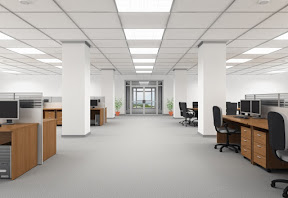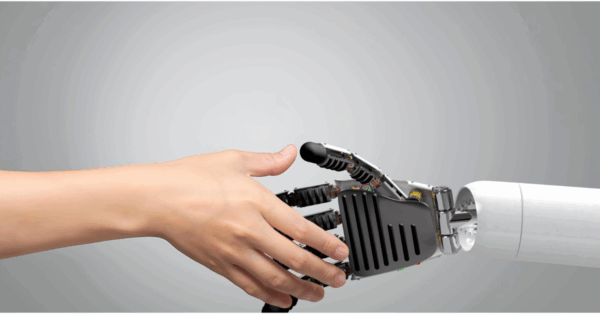When Cynthia Yang, a 22-year-old employee at Chicago-based marketing firm Red Frog Events, needs a short break from work, she turns to a quick game of foosball or a ride on the company’s indoor zip-line. Once Friday rolls around, and the long week of work is mostly complete, Yang, along with the firm’s 120 or so other employees, might stay put and have a beer at the company bar.
Deemed “Camp Red Frog,” it’s safe to say that Red Frog’s office space is different.
Along with tree houses, a slide and a conference table made entirely of Legos, the office space at Red Frog is open, flexible and collaborative — perfect for the millennial employee, a demographic creeping en masse into corporate offices. At about 80 million strong — as some estimates have it — this generation represents the next great wave of talent, and having an office space and culture that’s up to snuff is part of what can set an organization apart for landing and retaining the best of them.
“I don’t really enjoy cubicles,” said Yang, whose self-appointed title with the company is president of passion — she is quick to point out, however, that she is not an executive. “[They] are really enclosed and you really can’t branch out … I feel [that] if you’re stuck in a cubicle, you’re kind of clouded.”
That sentiment is the same for many Gen Y employees, whose penchant for group settings and a desire for adaptable working conditions should have many talent managers focused on tweaking their organization’s office culture, said Rachel I. Reiser, founder and principal of Generationally Speaking, a generational issues consultancy.
While Red Frog’s workspace is in a league of its own, the millennial generation values many of the characteristics the company gives its employees in a workspace. Flexibility, openness and comfort replace the traditional high-walled, drab colors and cloudiness of the conventional office.
“I can tell you that a lot of what we know about the millennial generation is sort of the teamwork orientation … Having more common space area, having more adaptable and flexible [space], are the ways they want to be as they approach their work,” Reiser said.
When asked what the ideal office space for a group of millennial employees would look like if she were to design it, Aga Artka, an interior designer and the owner of her own design firm, Aga Artka Interior Design LLC, said: “It certainly would be ‘boundary-less’ … giving people space where they could build it the way they want it — so very limited parameters as to your job description equals this type of space.
“It really should be up to the employee where they want to do their work, or how they want to do work. Giving them lots of opportunities to work the way they want to, but to remember that it is a professional environment and that they need to be producing results.”
Although companies like Red Frog and other progressive tech firms — Google and Facebook, among others — might have an edge in the race to “millennialize” the office, Artka said there are many small things organizations can do to adapt their existing space to provide for these younger workers.
Build a space that inspires: Bring color to the office. A coat of paint, some locally commissioned artwork or perhaps a “rotating artwork schedule with a local art guild” would help spark creativity, productivity and innovation, she said.
Create a space that promotes collaboration: Take an unused conference room and turn it into a “war room,” a creative idea room or problem solving room with lower height tables and lounge furniture, bean bag chairs or yoga balls — furniture that “stimulates thinking, playfulness” and out-of-the box ideas. This might cater well to all workers, not just millennials.
Promote wellness: Take a conference room and turn it into a yoga/Pilates studio once or twice a week after hours, catering to Gen Y’s values of wellness. The flexible furniture could be pushed aside to open up floor space.
Provide access to natural light: If possible, open up the window wall by “demounting executive offices and moving them inside the office perimeter.” This can satisfy millennials’ desire to have more openness and light in the workspace.
“The wish list is having a variety of workspace options, including [to] have a lot of team space,” Reiser said. Yet what’s most important for millennials, she added, isn’t necessarily rooted in an organization’s physical space, but in the attitude and culture the organization projects to its employees — millennial or otherwise.
“They are not just shopping for a paycheck,” Reiser said. “They are shopping for a values system.”
This doesn’t necessarily mean that older generations don’t seek value or meaning in their work. It just means millennials were among the first to speak up and demand it from employers.
Yang, of Red Frog, reckoned the same, saying it wasn’t necessarily the swanky and fun office that originally attracted her to the firm, but the passion and attitude of its leaders. The people who worked there showed a visible sense of enjoyment and fulfillment in the work, she said. There was a sense of shared values.
That isn’t to say that an office with a zip-line, a bar and a foosball table doesn’t help.
“It is really cool and awesome,” Yang said of the office. “That’s why we stay so long … we don’t really want to leave.”
Frank Kalman is an associate editor of Talent Management magazine. He can be reached at fkalman@talentmgt.com.
















